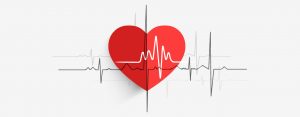Obstructive Sleep Apnea Syndrome (OSAS) has a number of different consequences for your health, including your cardiovascular system. Do you want more details about it? Continue reading!
We already know that Obstructive Sleep Apnea Syndrome (OSAS) is a widespread disease characterized by upper airways obstruction during sleep, usually accompanied by a drop in blood oxygen saturation, followed by a transient arousal from sleep to breathe. Its main manifestations during sleep include snoring, pauses in breathing, fragmentation of sleep, which lead to daytime incapacitating problems such as excessive daytime sleepiness, cognitive disturbances (for instance, loss of productivity due to difficulty of concentration and memorization), and morning headaches. If you have one of these symptoms, your physician can request tests that will monitor your sleep and help him or her diagnose your disorder.
Moreover, diseases associated with Apnea include, but are not limited to, Coronary Artery Disease (CAD). Are you aware of this disease? We will explain you everything there is to know about it!
According to the World Health Organization, cardiovascular diseases are the number one cause of death: over 17 million people a year globally. One of these is Coronary Artery Disease (CAD). But what is this disease? Let’s see it: is consists of harm to or disease in the main cardiac blood vessels. CAD stems from an obstruction of coronary arteries, which are the vessels that supply blood to the heart muscle. Coronary circulation is the circulation of blood in the coronary arteries; it can be blocked by fat plaques that build-up inside them, thus limiting blood flow to the heart.
Coronary Artery Disease is widespread. It can be asymptomatic, but it can also cause chest pain and heart attack.
According to the article Síndrome da Apneia Obstrutiva do Sono e Doenças Cardiovasculares (Obstructive Sleep Apnea Syndrome and Cardiovascular Diseases), published in Revista Neurociências at http://www.revistaneurociencias.com.br/ in 2014, it is estimated that coronary artery disease affects 25% of patients with sleep apnea; the prevalence is even higher in patients with moderate to severe apnea.
To this end, one option is Sleep Apnea Digital Monitoring (SADM), the Biologix Sleep Test. It is a test you can conduct at home -simple, convenient, and effective, with no need to sleep at a sleep lab. Before going to sleep for the night, just place the Oxistar sensor, which is a high performance oximeter, on your finger and start the test using the Biologix App. Upon waking up, click on “end test” to get the result in a few seconds by e-mail.
It is also possible to establish this diagnosis by means of a more complex test called Polysomnography. In this case, patients are required to sleep for one night at a sleep lab, where they are monitored using sensors that record the passage of air through nose and mouth, blood oxygenation, heart rate, brain activity, as well as chest and limb movements.
What is the appropriate treatment? For patients already diagnosed with Obstructive Sleep Apnea Syndrome (OSAS), treatment aims at controlling symptoms and decreasing cardiovascular risk. It should be multidisciplinary and, depending on the apnea level, it can go from weight loss to the use of intraoral devices and/or CPAP. However, if they are to improve their quality of life, all Apnea patients must change their lifestyle habits.
A few tips for you: you have be in the arms of Morpheus! (Expression alluding to the Greek god of dreams). How?
- Having a good sleep hygiene.
- Losing weight.
- Being physically active.
- Avoiding drug and tobacco use.
DISCLAIMER: The information contained in this blog aims at assisting you in your education and is not intended to be construed in any manner as medical advice. Only physicians and dentists can diagnose diseases and prescribe treatments and medication. Thank you for visiting our website.





